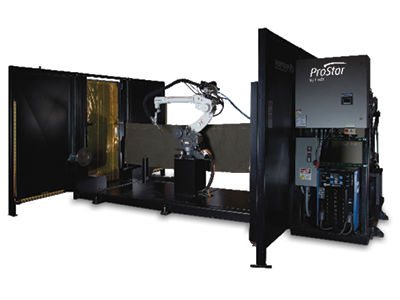A Beginner’s Guide to the Benefits of Robotic Welding
Robotic welding is a technology that has revolutionized the manufacturing industry. It can allow for faster and more efficient production of products, leading to significant savings in both time and money. If your operation is considering making an investment in robotic welding, here are some advantages to consider.
Reduced Labor Costs
Robotic welding can significantly reduce labor costs by replacing human welders with robots. Robots can work around the clock without needing breaks or rest, and they can be programmed to perform specific tasks with a high degree of accuracy. This leads to a faster and more efficient production process, which can result in lower labor costs.

Increased Productivity
Traditional welding methods, such as manual or semi-automatic welding, can be slow and labor-intensive. Robotic welders, on the other hand, can complete a task in a fraction of the time. This is because robots are able to move quickly and accurately, and they can also work around the clock without needing breaks or rest. Additionally, robotic welding systems can be programmed to handle multiple welding tasks at once. This efficiency can result in a significant increase in the number of products produced per day.
Reduced Material Waste
Even the most skilled welders make mistakes. However, with welding robotics, everything is regulated, including power and wire. Robots are able to make precise cuts and welds, which can reduce the amount of material that is wasted during the manufacturing process. This can lead to significant cost savings over time.
Improved Product Quality
Robotic welding can improve the weld quality of products by providing a high degree of precision and consistency. Because robots are not affected by factors such as fatigue or lack of concentration, they can perform a task with a consistent, high degree of accuracy.
Increased Safety
Robotic welding can increase safety by reducing the risk of accidents. Robots can be programmed to perform tasks in a specific sequence, which reduces the risk of human error. They can also be designed to work in hazardous environments, such as high-temperature or high-radiation areas, which can protect human workers from exposure to these dangerous conditions.
Linde Knows Welding
In conclusion, robotic welding can significantly decrease costs and improve productivity by increasing speed and precision, reducing material waste and increasing safety in the manufacturing process. Contact your local Linde representative today or call us at 1-800-225-8247 for more information on how a robotic welding system can best suit your welding process.






























